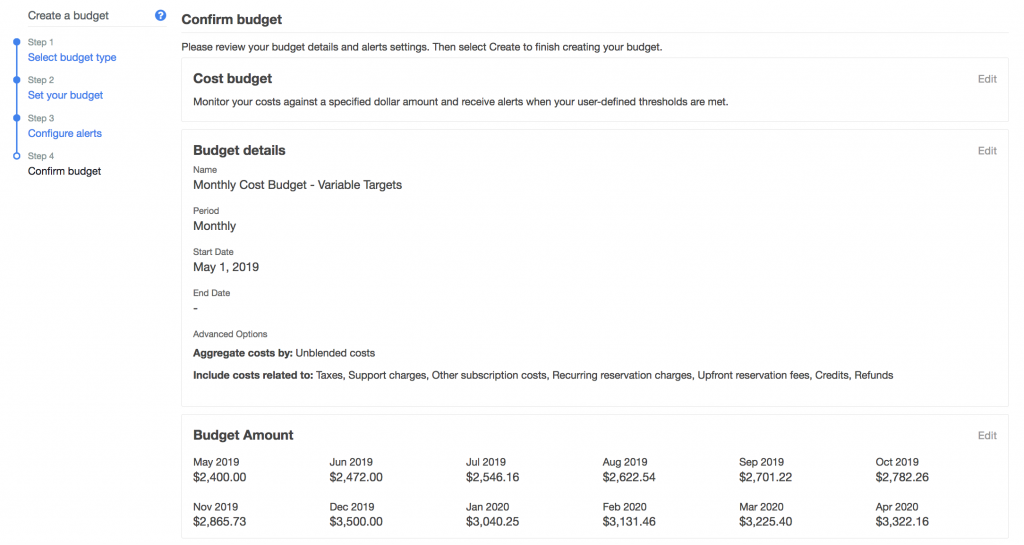AWS Cloud Financial Management
Launch: Variable Budget Targets for Cost and Usage Budgets
AWS Budgets gives you the ability to create custom budgets based on your costs, usage, or reservations. You receive alerts when you exceed (or are forecasted to exceed) your budgeted amount. Using the new AWS Budgets planning features, you can specify variable budget targets for each month or quarter for up to one year in the future when creating or editing your cost and usage budgets.
In this post, I walk you through the process of setting a custom total monthly cost budget using the new monthly budget planning capabilities. Use the AWS Budgets dashboard in the console.
Setting a custom cost budget
To test the new variable budget target functionality, create a total monthly cost budget. To get started creating a custom cost budget, in the AWS Budgets dashboard, choose Create Budget in the top right corner.
For Budget type, choose Cost budget. This takes you to the budget creation page.
For Budget period, specify Monthly. You can also set variable budget targets for the Quarterly budgeted period.
Using the new monthly budget planning capabilities
To track against the same budgeted amount each month, leave the form set to the Fixed option and input your desired budgeted amount.
However, to specify individual monthly budget targets, choose the new Monthly Budget Planning option. If you have chosen a quarterly budget period, then you can specify budgeted amounts for the coming three quarters, in addition to the current quarter. The following screenshot shows an example budget.

To get started using the auto-fill capabilities, specify your starting budgeted amount and your desired Budget Growth %. From there, choose Auto-fill, which adds the specified budgeted amount to the current month and then calculates the budgeted amounts using the forecasted growth percentage for the coming 11 months.

If your business is cyclical in nature (and many businesses are), you can then customize your budgeted amounts in line with your expected usage patterns. For example, I’ve increased the December 2019 budgeted amount in the following screenshot to align with my business patterns leading up to the holiday season. However, if you have a company that prepares taxes in the United States, you might see a more noticeable spike in your spend closer to the April time frame.

After you have specified your monthly budget targets, you can configure any alerts and confirm your budget details, as in the following screenshot.

If you are satisfied with how your budget looks, choose Confirm. Your new budget is automatically added to the Budgets dashboard.
From there, you can then analyze the accuracy of your forecasts over time from the Budget Details page by measuring your actual spend against your projected spend for each budgeted period. You can access that page by selecting an individual budget.
Conclusion
This feature launch empowers you to set cost and usage budgets that precisely match your business patterns. To learn more about AWS Budgets planning capabilities, see the What’s New post and the AWS Budgets webpage.